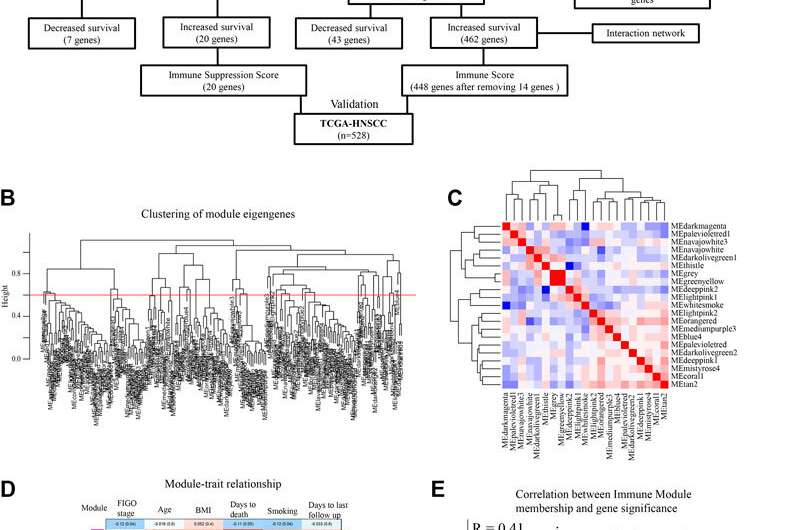'Catch-22' scenario good news for some cancer patients

Traits that allow cancer cells to escape the body's natural defense system and develop into tumors are actually a good indicator to a patient's survival prognosis, according to University of Queensland researchers.
UQ Diamantina Institute researcher Dr. Janin Chandra described the discovery as a "catch-22 situation" and good news for patients with either cervical or head and neck cancer who have immune inhibitory traits present in their tumors.
"Our natural defense system is programmed to pick up abnormal cancerous cells and destroy them before they can grow into a tumor mass and spread through our bodies," Dr. Chandra said.
"However, the tumor can grow by developing cunning strategies to either escape our natural defense system, or to actively block it.
"We call these strategies immune inhibition, and until recently we thought this trait was a bad thing.
"Our recent research has shown that tumors of patients with either cervical cancer or head and neck cancer which had many immune inhibition traits, had the best five-year survival prognosis compared to patients with tumors without the traits."
The data also showed that tumors with immune inhibition traits also had high levels of defense system activity, which fight against cancer.
Dr. Chandra said researchers now had a better understanding that having immune inhibition traits in the tumor was actually not bad, and in fact was a sign of immune activation.
People who lack this immune activity inside the tumor, regardless if 'good' or 'bad' immune activity, have a worse prognosis.
She said this knowledge had important implications in designing future therapies for cancer.
"On average only 20 percent of patients respond to new immune-targeted drugs, so we are organizing a clinical research study to develop predictors of response to these drugs," Dr. Chandra said.
"You need to give patients that aren't responding to treatment an alternative, so our research is geared to identify new targets that could be used for patients who don't have any natural defense cells in their tumors."
The research paper—"Immune-inhibitory gene expression is positively correlated with overall immune activity and predicts increased survival probability of cervical cancer patients"—is published in Frontiers in Molecular Biosciences.
More information: Megha Budhwani et al. Immune-Inhibitory Gene Expression is Positively Correlated with Overall Immune Activity and Predicts Increased Survival Probability of Cervical and Head and Neck Cancer Patients, Frontiers in Molecular Biosciences (2021). DOI: 10.3389/fmolb.2021.622643


















